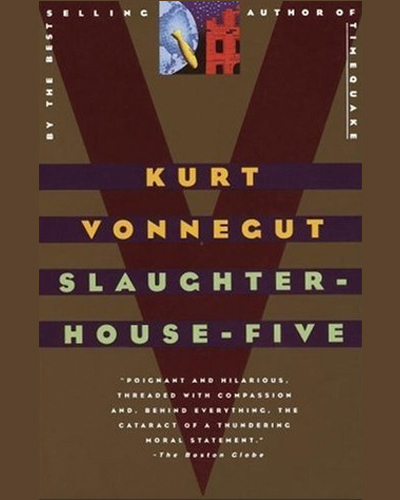
| Language | From $0.00 |
| Release Date | March 31, 1969 |
| Genre | Classics |
| Author | Kurt Vonnegut Jr. |
| File Size | Dial Press |
| Rating | (4.09) |
Slaughterhouse-Five tells the story of Billy Pilgrim, an American soldier who becomes “unstuck in time” and experiences various moments of his life in a non-chronological order. The novel takes its title from the setting of the story’s climax, a slaughterhouse in Dresden, Germany, where Billy and other prisoners of war are held during the devastating firebombing of the city by Allied forces in World War II.
Billy Pilgrim, the protagonist, is a peculiar character who, after surviving the horrors of war, is abducted by aliens known as Tralfamadorians. These extraterrestrial beings have a unique perception of time and teach Billy about their philosophy, which becomes a central theme in the story.
Throughout the novel, Vonnegut portrays the brutality and senselessness of war, using the firebombing of Dresden as a prime example. The author’s unflinching depiction of violence and suffering serves as a critique of the glorification of war and the dehumanization of its victims.
Slaughterhouse-Five engages with the philosophical debate between free will and determinism. The Tralfamadorians' belief in the predetermined nature of events challenges the notion of human agency, raising questions about the role of individual choice in shaping one’s destiny.
The novel’s non-linear narrative structure reflects the fragmented nature of memory and the fluidity of time. Vonnegut’s exploration of these concepts invites readers to reconsider their own perceptions of reality and the human experience.
Vonnegut employs satire and black humor throughout the novel to underscore the absurdity of war and the human condition. His biting wit and ironic tone provide a unique lens through which to examine these serious subjects, making the novel both entertaining and thought-provoking.
Slaughterhouse-Five is a prime example of metafiction, with Vonnegut inserting himself into the narrative as both the author and a character. This self-aware approach adds another layer of complexity to the story, blurring the lines between fiction and reality.
Upon its publication, Slaughterhouse-Five received widespread acclaim from critics and readers alike. Its innovative narrative style, combined with its powerful anti-war message, has solidified its status as a classic work of modern literature.
Slaughterhouse-Five has had a lasting impact on popular culture, inspiring other works of literature, film, and music. Its influence can be seen in various forms of artistic expression, attesting to the enduring relevance of Vonnegut’s timeless masterpiece.
In conclusion, Slaughterhouse-Five is a powerful, thought-provoking novel that remains just as relevant today as it was when it was first published. Its exploration of the horrors of war, the nature of time and memory, and the human condition make it a must-read for anyone interested in modern literature. Vonnegut’s masterful storytelling and distinctive voice ensure that this classic novel will continue to captivate readers for generations to come.